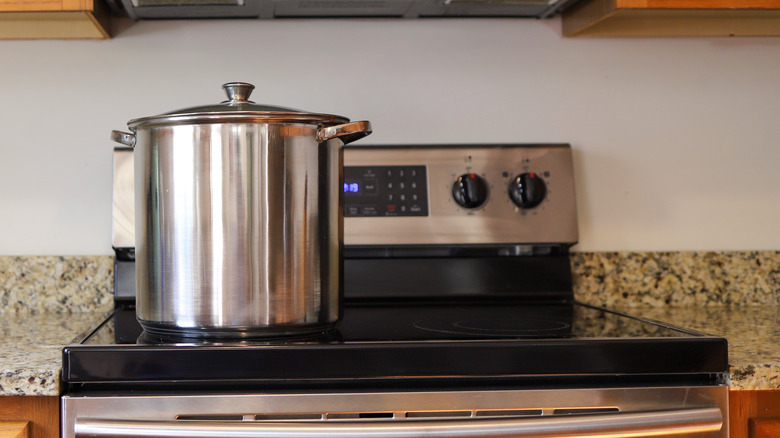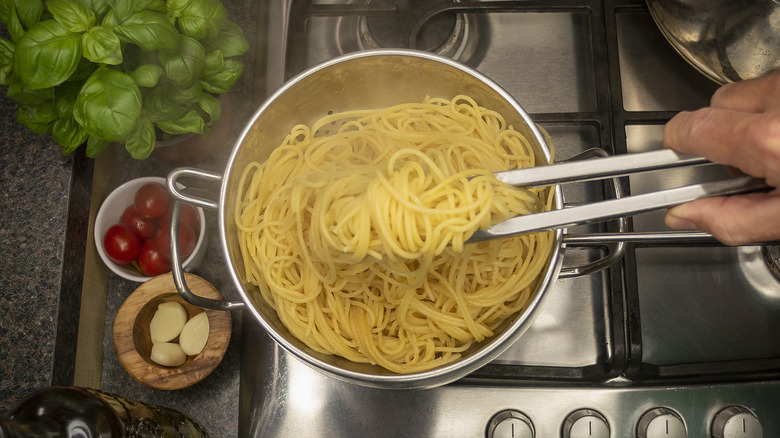The Foolproof Method Chef Ming Tsai Uses To Cook Perfect Noodles
The inherent simplicity of boiling noodles is deceptive, to say the least. What's so hard about filling a pot with water and throwing some noodles into boiling water until they're cooked? It's not that it's hard, but you can't go too far in either direction. You can't simply set it and forget it like a Foreman grill, but you shouldn't turn it into rocket science either. There truly is a right way and a wrong way to boil noodles (or pasta). According to chef Ming Tsai, a common mistake is making things harder than they need to be.
@chefmingtsai Noodle 101 #noodlehack #howtocook #learneditontiktok #chefsoftiktok #cookingvideos #noodletok
In a video where he walks through his process, Tsai explains how a few small tweaks can lead to perfectly cooked noodles every time. No more gummy texture or a sticky, clumped mess. His method involves using a big pot (like, really big). Salt the water, toss in your noodles, cover the pot to get things bubbling fast, then uncover and let the magic happen. It's not flashy, but it works. It turns out, most of us have been low-key sabotaging our noodles all this time.
Size (and salt) matter more than you think
Ming Tsai recommends filling the pot generously with water. While you're doing that, be sure to salt the water like nobody's business. If your salt-to-water ratio is more of a pinch here-and-there situation, you're probably under-seasoning. Tsai's approach uses enough salt to make the water "taste like the ocean" (a common rule of thumb in professional kitchens). That way, the noodles carry a bit of flavor instead of relying solely on the sauce.
The bigger detail is pot size, as using too little water in a cramped pot is a recipe for disaster. Noodles need space to move freely so they don't stick together and cook unevenly. If they're bunched up or crowded, the starch they release can quickly make the water thick and murky, leaving you with a gummy texture.
The added bonus of a bigger pot is better heat retention. When you drop pasta noodles into a small pot, the water temperature takes a nosedive. That means slower cooking, stickier noodles, and that weird white foam no one wants. A large pot keeps things steady and simmering so your noodles have a more professional finish.
Cover early, uncover later
Chef Tsai's lid trick is another easy way to streamline the process. After adding pasta noodles to the pot, he places a lid on top, but not for the entire cook time. Covering the pot at the beginning helps bring the water up to a boil quickly, which is especially helpful when you're using a large volume of water. Once it hits a rolling boil again, the lid comes off to allow the pasta to finish cooking uncovered.
Cooking with the lid off at this stage is important because it keeps the pot from boiling over and also lets steam escape, which helps control the texture. Boiling pasta with the lid on for too long can make it go mushy fast, especially if you're not checking on it regularly.
Tsai's method isn't complicated, but it's thoughtful. From the moment the water hits the stove to the final strain, each step is designed to avoid pitfalls that too often lead to overcooked, bland, or clumpy noodles. Stick to his playbook and you'll be much closer to serving up noodles like the pros do.


